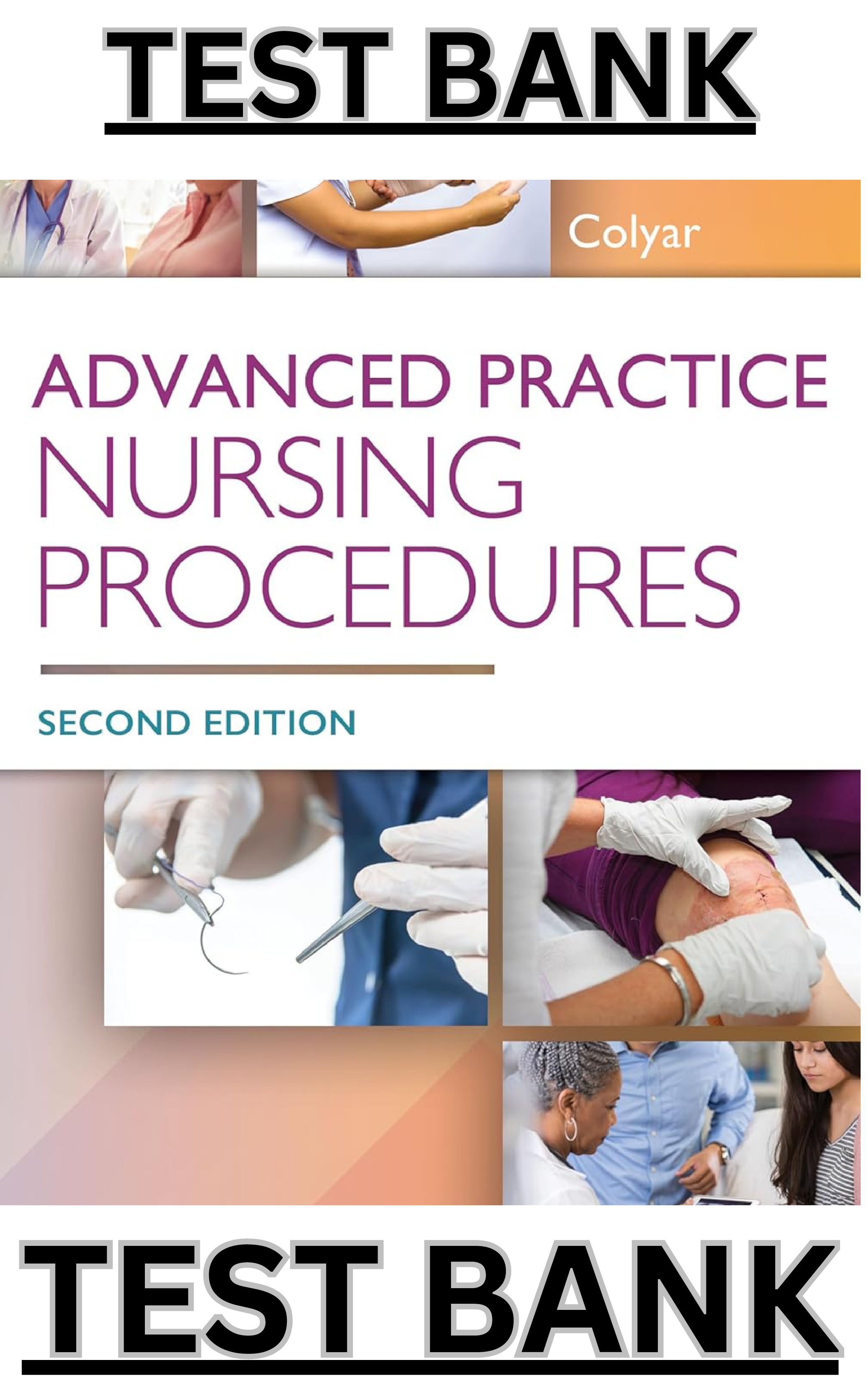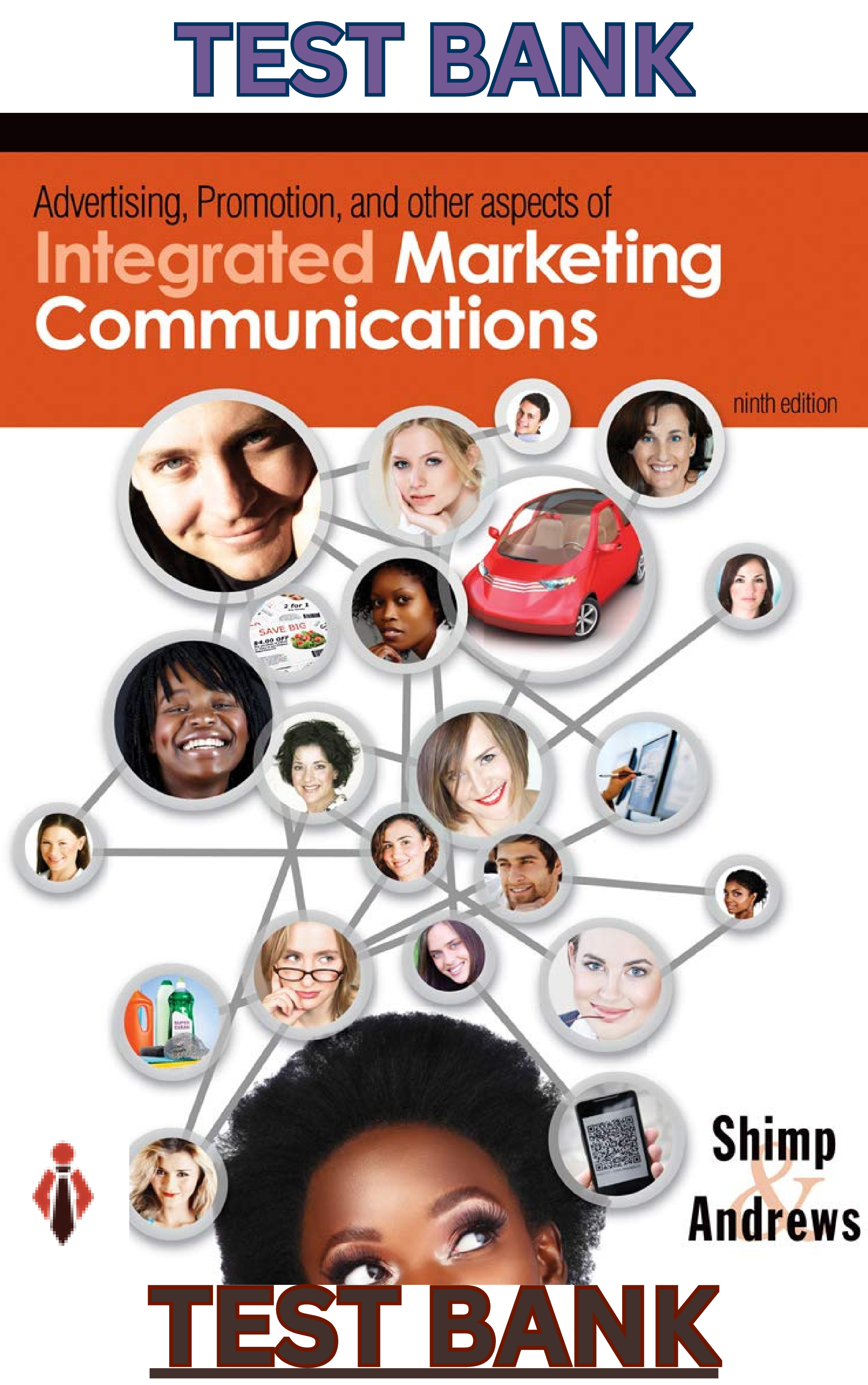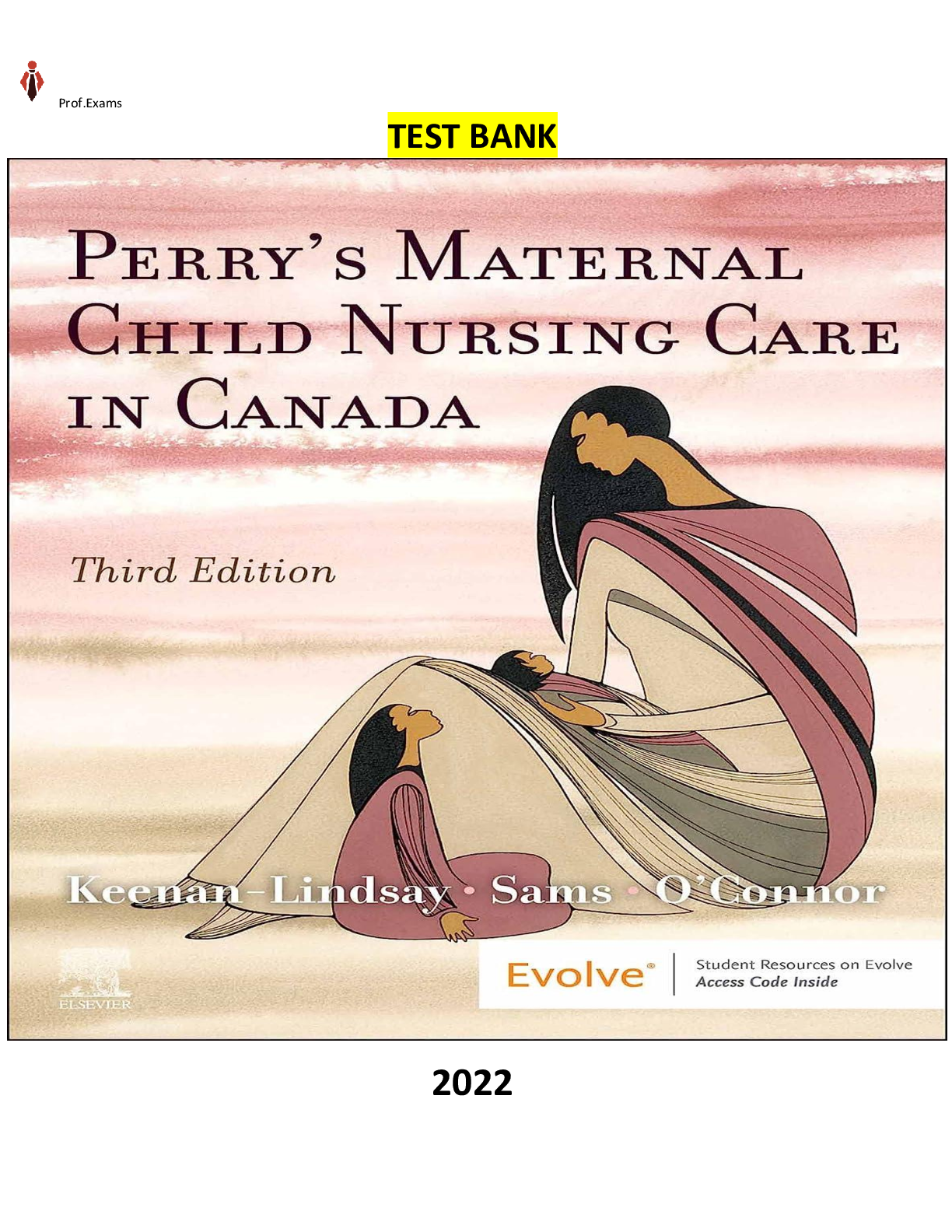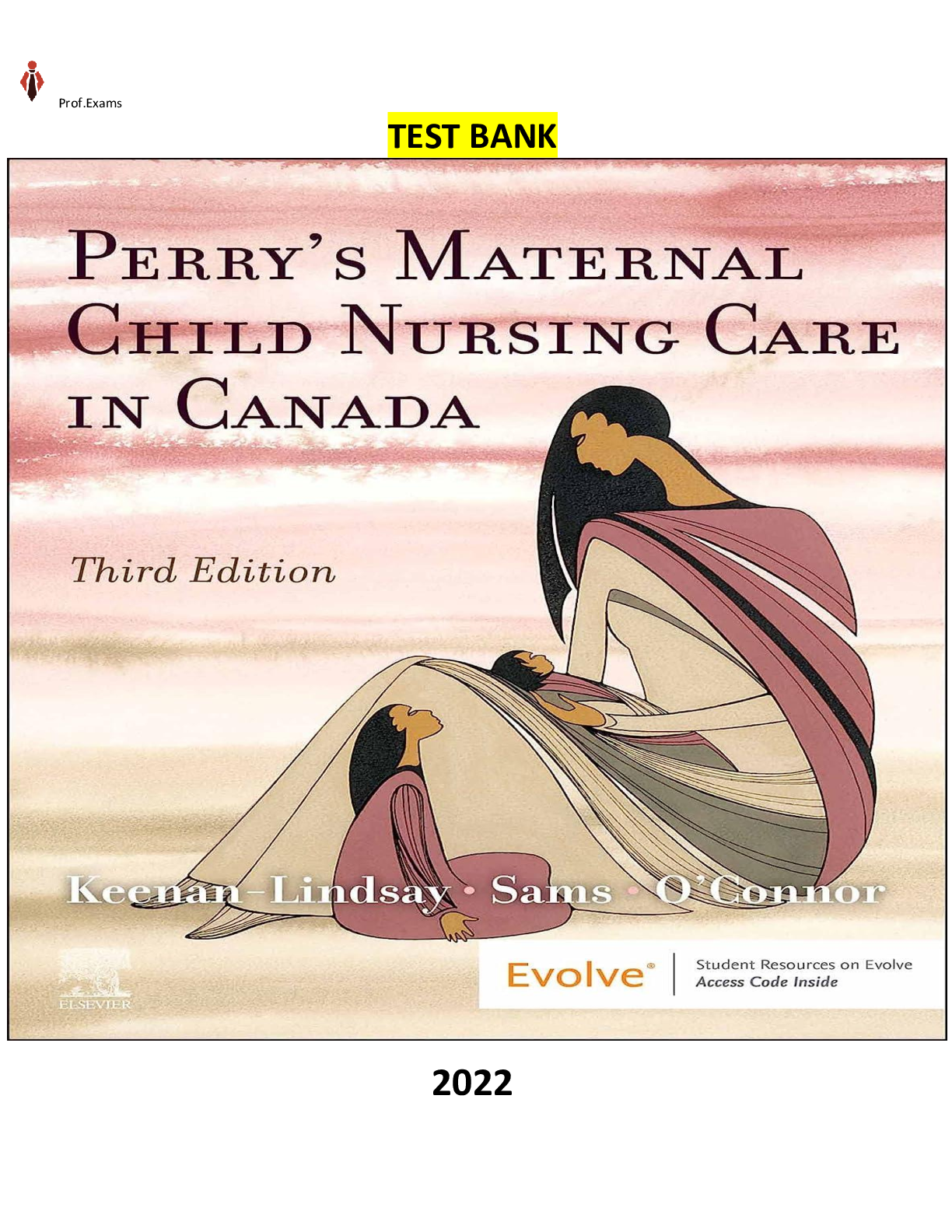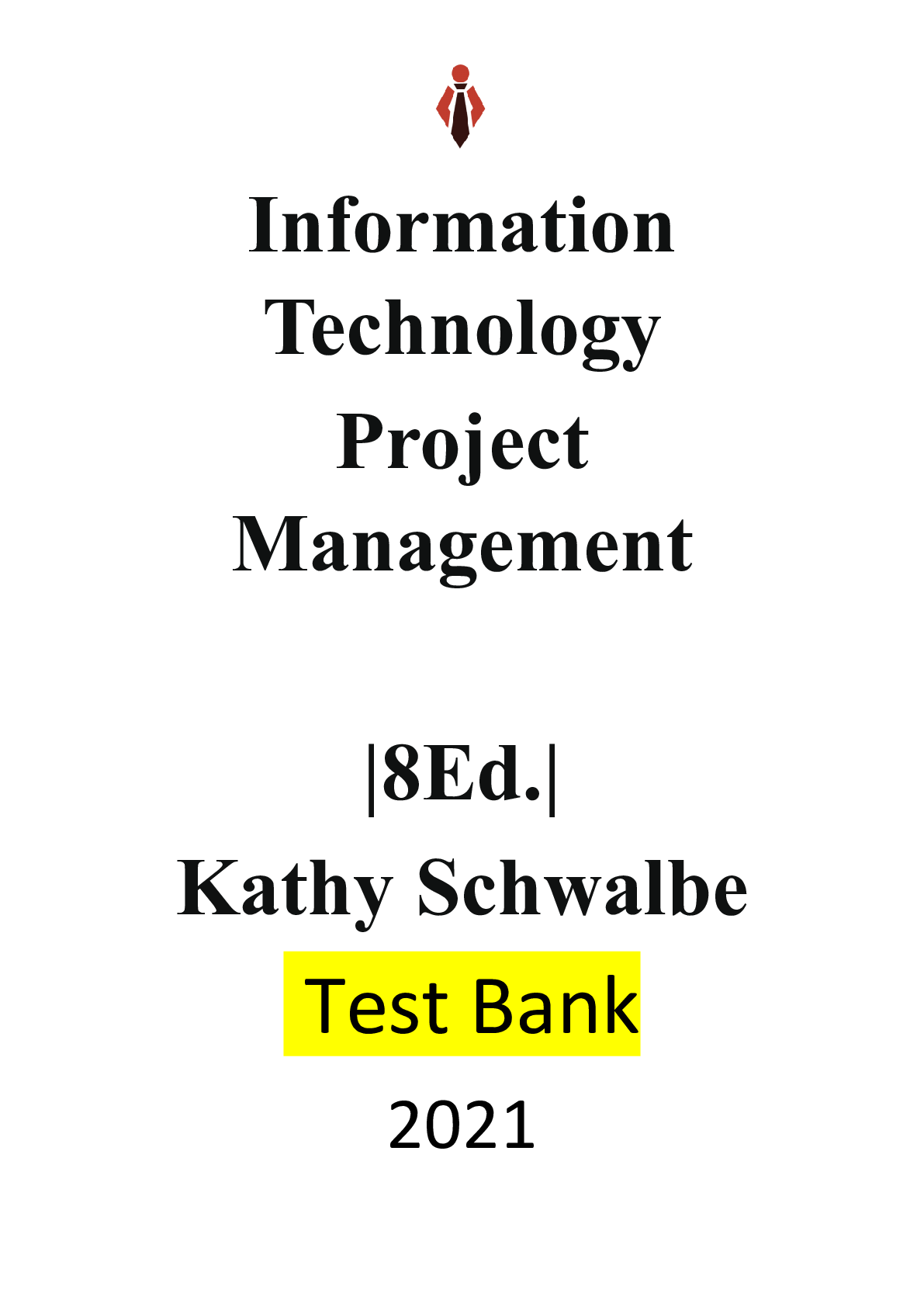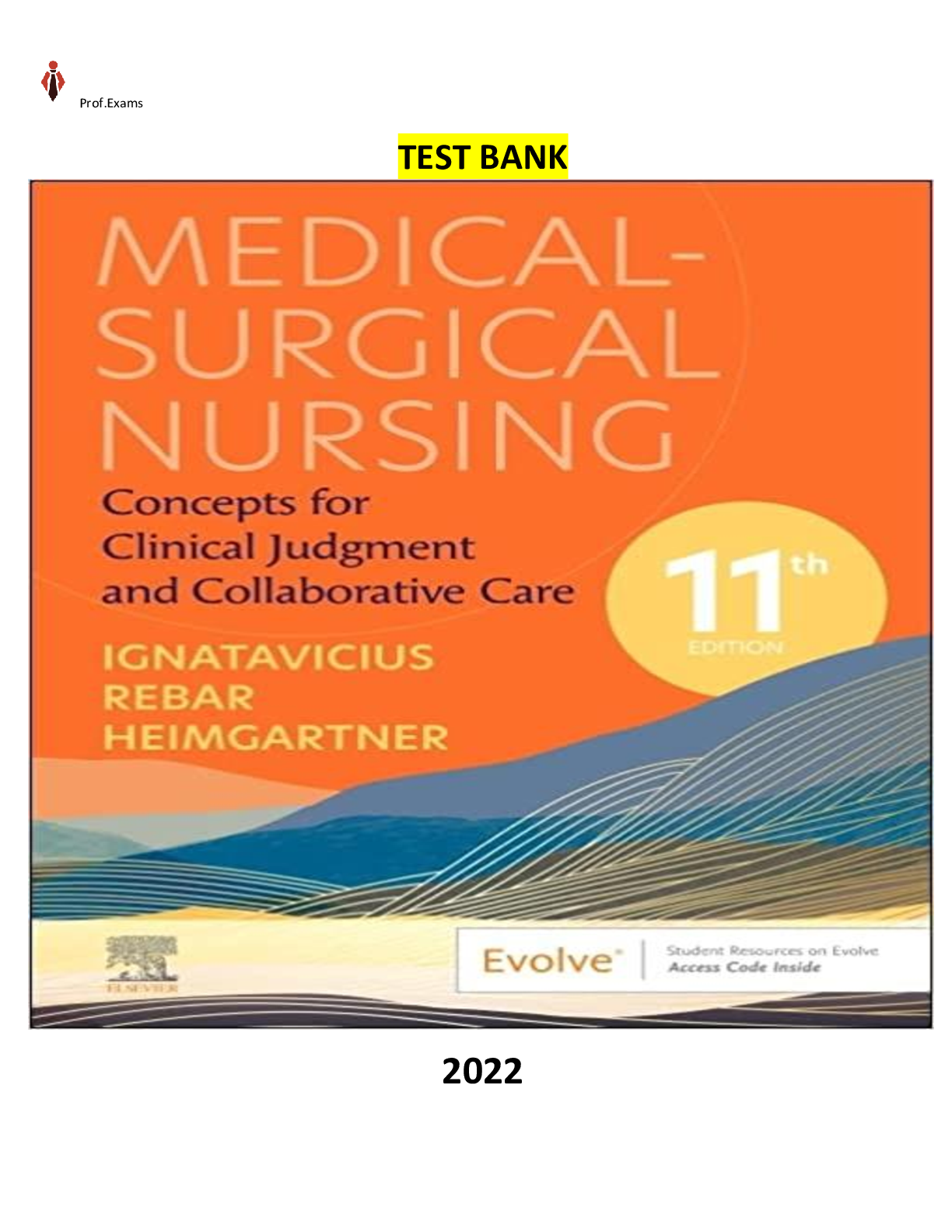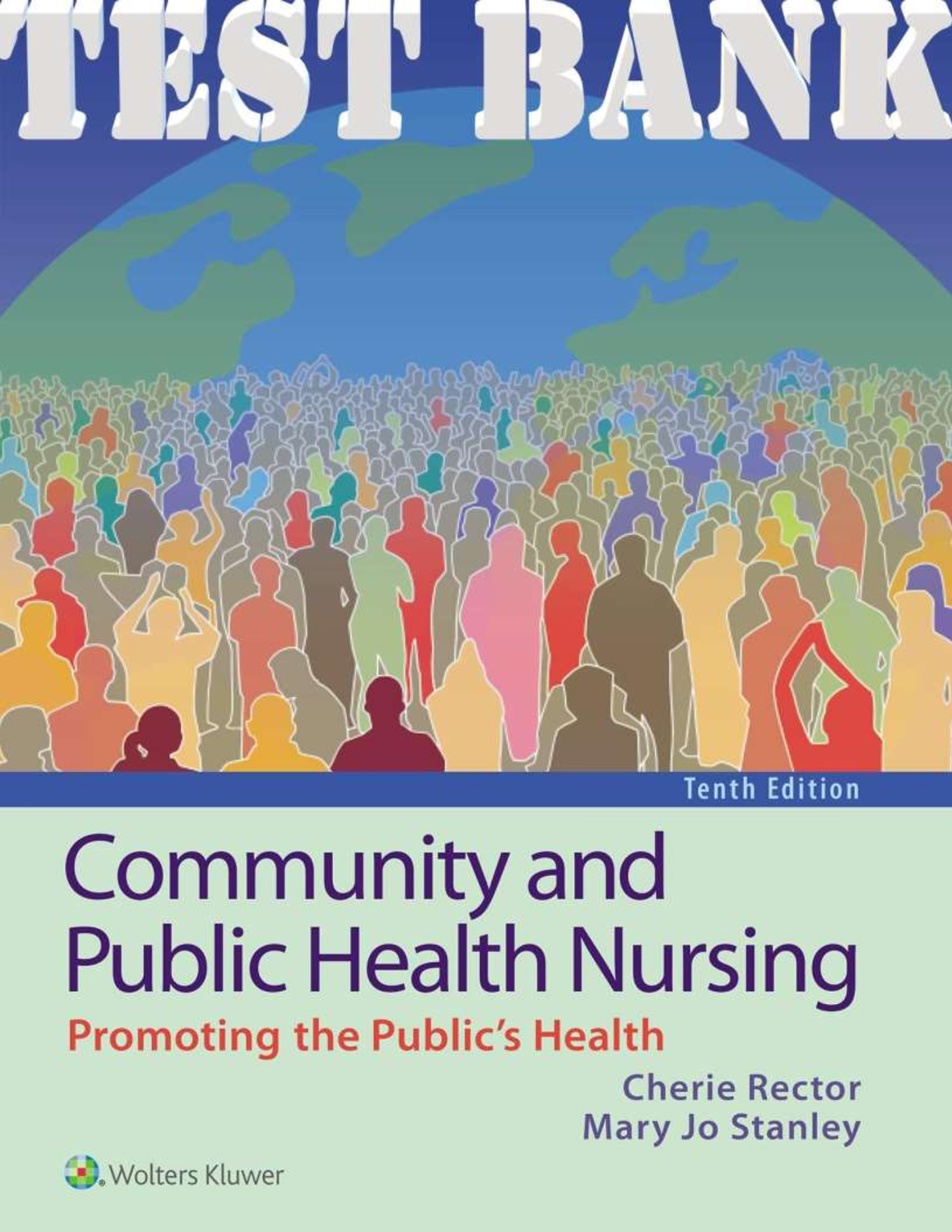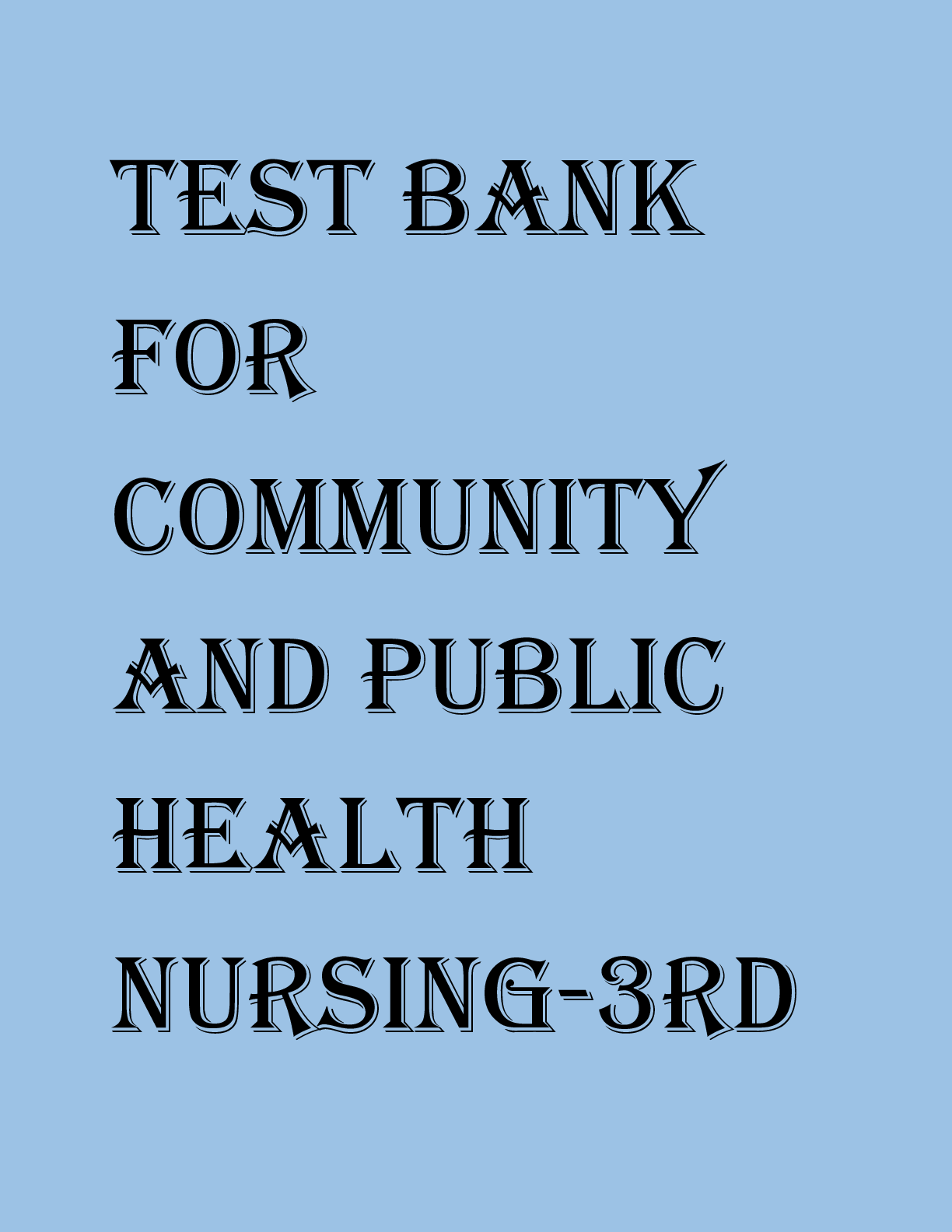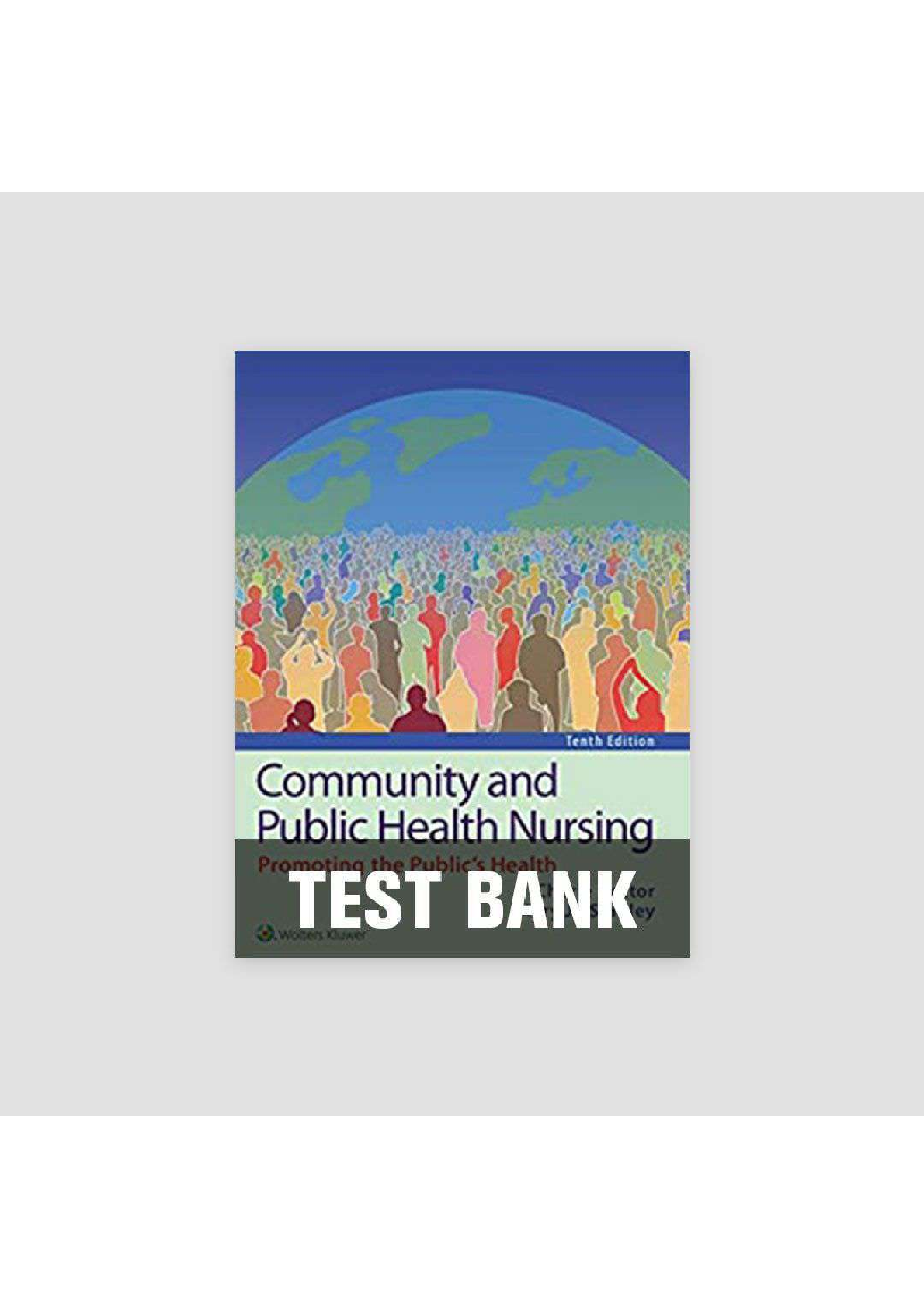*NURSING > TEST BANK > COMPLETE - Elaborated Test bank for Community and Public Health Nursing-Evidence for Practice 4Ed.by (All)
COMPLETE - Elaborated Test bank for Community and Public Health Nursing-Evidence for Practice 4Ed.by Rosanna DeMarco & Judith Healey-Walsh.ALL Chapters1-25 included 280 pages with Questions & Answers-LATEST
Document Content and Description Below
COMPLETE - Elaborated Test bank for Community and Public Health Nursing-Evidence for Practice 4Ed.by Rosanna DeMarco & Judith Healey-Walsh.ALL Chapters1-25 included 280 pages with Questions & Answers-... LATEST COMPLETE - Elaborated Test bank for Community and Public Health Nursing-Evidence for Practice 4Ed.by Rosanna DeMarco & Judith Healey-Walsh.ALL Chapters1-25 included 280 pages with Questions & Answers-LATEST Part One: The Context of Community and Public Health Nursing Chapter 1: Public Health Nursing: Present, Past, and Future Chapter 2: Public Health Systems Chapter 3: Health Politics, Policy, and Reform Chapter 4: Global Health: A Community Perspective Part Two: Evidence-Based Practice and Population Health Chapter 5: Frameworks for Health Promotion, Disease, Prevention, and Risk Reduction Chapter 6: Epidemiology: The Science of Prevention Chapter 7: Describing Health Conditions: Understanding and Using Rates Chapter 8: Gathering Evidence for Public Health Practice Part Three: Implementing Nursing Practice in Community Settings Chapter 9: Planning for Community Change Chapter 10: Cultural Competence: Awareness, Sensitivity, and Respect Chapter 11: Community Assessment Chapter 12: Care Management, Case Management, and Home Healthcare Chapter 13: Family Assessment Part Four: Challenges in Community and Public Health Nursing Chapter 14: Risk of Infectious and Communicable Diseases Chapter 15: Emerging Infectious Diseases Chapter 16: Violence and Abuse Chapter 17: Substance Abuse Chapter 18: Underserved Populations Chapter 19: Environmental Health Chapter 20: Community Preparedness: Disaster and Terrorism Part Five: Specialty Practice Chapter 21: Community Mental Health Chapter 22: School Health Chapter 23: Faith-Oriented Communities and Health Ministries in Faith Communities Chapter 24: Palliative and End-of-Life Care Chapter 25: Occupational Health Nursing 1. A nurse is striving to practice patient-centered care at a hospital. Which action best exemplifies providing patient-centered care? A) Having a client complete a self-reported functional status indicator and then reviewing it with the client B) Explaining to a client the benefits of computer-assisted robotic surgical techniques, which the hospital recently implemented C) Recording a client's signs and symptoms in an electronic health record D) Performing continuous glucose monitoring of a client while the client is in the hospital Ans: A Feedback: Patient-centered care considers cultural traditions, personal preferences, values, families, and lifestyles. Clients become active participants in their own care, and monitoring health becomes the client's responsibility. To help clients and their healthcare providers make better decisions, the Agency for Healthcare Research and Quality (AHRQ) has developed a series of tools that empower clients and assist providers in achieving desired outcomes, including client-reported functional status indicators. Computer-assisted robotic surgical techniques, electronic health records, and continuous glucose monitoring in the hospital are all technological advances in healthcare, but they do not help the client become a more active participant in his or her care, and thus are not good examples of patient-centered care. Origin: Chapter 1- Public Health Nursing, 2 2. A nurse is caring for an older client who is struggling to manage her type 2 diabetes mellitus. The nurse should recognize which social determinants of this client's health? (Select all that apply.) A) Household income of $23,000 per year B) Reading level of a third grader C) Medication ineffective due to error in prescription D) Originally from Sudan E) No family in the area Ans: A, B, D, E Feedback: The social conditions in which people live, their income, social status, education, https://studentmagic.indiemade.com/ literacy, home and work environment, support networks, gender, culture, and availability of health services are the social determinants of health. These conditions have an impact on the extent to which a person or community possesses the physical, social, and personal resources necessary to attain and maintain health. A medical error on the part of the client's primary care provider or nurse would not constitute a social determinant of the client's health. Origin: Chapter 1- Public Health Nursing, 3 Page 3 3. A nurse successfully persuades an obese client to perform a weekly weigh-in at home using a digital scale and record the weight in a log. This strategy is an example of: A) Telehealth B) Health information technology C) Personal responsibility for health D) Evidence-based nursing Ans: C Feedback: Personal responsibility for health involves active participation in one's own health through education and lifestyle changes. In this case, the client makes a positive change in lifestyle by monitoring body weight weekly. Telehealth is the use of electronic information and telecommunications technologies to support long-distance clinical healthcare, client and professional health-related education, public health, and health administration. Health information technology (HIT) is defined as the comprehensive management of health information and its exchange between consumers, providers, government, and insurers in a secure manner. Evidence-based nursing is the integration of the best evidence available with clinical expertise and the values of the client to increase the quality of care. Origin: Chapter 1- Public Health Nursing, 4 4. A nurse performs a variety of tasks as part of the nurse's position at a hospital. Which task best exemplifies public health? A) Reading current nursing journals and integrating the latest research into daily practice B) Instructing a client on how to best care for a suture site at home C) Participating in a videoconference call with a client who lives in a remote area D) Facilitating a community-wide smoking cessation program one month out of the year Ans: D Feedback: Public health is what society does collectively to ensure the conditions exist in which people can be healthy. A community-wide smoking cessation program is a great example of a public health intervention, in that it involves the collective effort of society to improve the health of its members. Reading and applying the latest nursing research is an example of evidence-based nursing. Instructing a client on how to best care for a suture site at home is an example of personal responsibility for health, but it is not focused on the health of the greater community. Participating in a videoconference call with a client who lives in a remote area is an example of patient-centered care and of an effective implementation of technology, but it is not particularly related to public health. Origin: Chapter 1- Public Health Nursing, 5 5. Public health nursing is distinguished from other specialties by adherence to eight principles. Which is one of the eight domains of public health nursing practice? A) Analytic assessment skills B) Investigation of disease C) Referral and follow-up D) Case management Ans: A Feedback: The eight domains of public health nursing practice are as follows: Analytic assessment skills, policy development and program planning skills, communication skills, cultural competency skills, community dimensions of practice skills, public health science skills, financial planning and management skills, and leadership and systems thinking skills. Investigation of disease, referral and follow-up, and case management are all public health nursing interventions but are not domains of public health nursing practice. Origin: Chapter 1- Public Health Nursing, 6 6. Public health nursing is distinguished from other specialties by adherence to eight principles. Which is one of the eight domains of public health nursing practice? A) Policy development and individual planning skills B) Individual dimensions of practice skills C) Financial planning and management skills D) Leadership and individual critical thinking skills Ans: C Feedback: The eight domains of public health nursing practice are as follows: Analytic assessment skills, policy development and program planning skills, communication skills, cultural competency skills, community dimensions of practice skills, public health science skills, financial planning and management skills, and leadership and systems thinking skills. Origin: Chapter 1- Public Health Nursing, 7 Page 4 7. Public health nursing is distinguished from other specialties by adherence to eight principles. Which are domains of public health nursing practice? (Select all that apply.) A) Intuitive assessment skills B) Community organization skills C) Communication skills D) Cultural competency skills E) Product marketing skills Ans: C, D Feedback: The eight domains of public health nursing practice are as follows: Analytic assessment skills, policy development and program planning skills, communication skills, cultural competency skills, community dimensions of practice skills, public health science skills, financial planning and management skills, and leadership and systems thinking skills. Origin: Chapter 1- Public Health Nursing, 8 8. Which was a duty performed by district nurses in Liverpool, England, in 1865? A) Use epidemiologic knowledge and methods B) Encourage community organization C) Report facts to and ask questions of physicians D) Assist physicians with surgery in the newly constructed hospitals Ans: C Feedback: Duties of district nurses in Liverpool, England, in 1865 included the following: Investigate new referrals as soon as possible; report to the superintendent situations in which additional food or relief would improve recovery; report neglect of clients by family or friends to the superintendent; assist physicians with surgery in the home; maintain a clean, uncluttered home environment and tend fires for heat; teach the client and family about cleanliness, ventilation, giving of food and medications, and obedience to the physician's orders; set an example for “neatness, order, sobriety, and obedience”; hold family matters in confidence; avoid interference with the religious opinions and beliefs of clients and others; report facts to and ask questions of physicians; and refer the acutely ill to hospitals and the chronically ill, poor without family to infirmaries. Using epidemiologic knowledge and methods and encouraging community organization are principles of public health today, not duties of district nurses in England in 1865. Nurses at that time assisted physicians with surgery in the home, not in newly constructed hospitals. Origin: Chapter 1- Public Health Nursing, 9 Page 5 9. Which is a Healthy People 2020 goal? A) Decrease the incidence of preventable disease, disability, injury, and premature death B) Reduce health inequity, decrease disparities, and improve the health of certain groups C) Create social and physical environments that promote good health for all D) Promote healthy development and healthy behaviors for the geriatric stage of life Ans: C Feedback: The Healthy People 2020 goals are as follows: attain high-quality, longer lives free of preventable disease, disability, injury, and premature death (not just to decrease the incidence of these); achieve health equity, eliminate disparities, and improve the health of all groups; create social and physical environments that promote good health for all; and promote healthy development and healthy behaviors across every stage of life, not just older adults. Origin: Chapter 1- Public Health Nursing, 10 10. A nurse is coordinating a plan to bring vaccinations in a cost-effective way to a rural community that currently lacks access to them. This is an example of which public health intervention? A) Surveillance B) Outreach C) Screening D) Case management Ans: D Feedback: In the intervention of case management, the nurse coordinates a plan or process to bring health services and the self-care capabilities of the client together as a common whole in a cost-effective way. In the intervention of surveillance, the nurse monitors health events through ongoing, systematic collection, analysis, and interpretation of health data for planning, implementing, and evaluating public health interventions. In the intervention of outreach, the nurse locates populations at risk, provides information, identifies possible actions, and identifies access to services. In the intervention of screening, the nurse identifies individuals with unrecognized risk factors or asymptomatic conditions. Origin: Chapter 1- Public Health Nursing, 11 Page 6. [Show More]
Last updated: 1 year ago
Preview 1 out of 278 pages
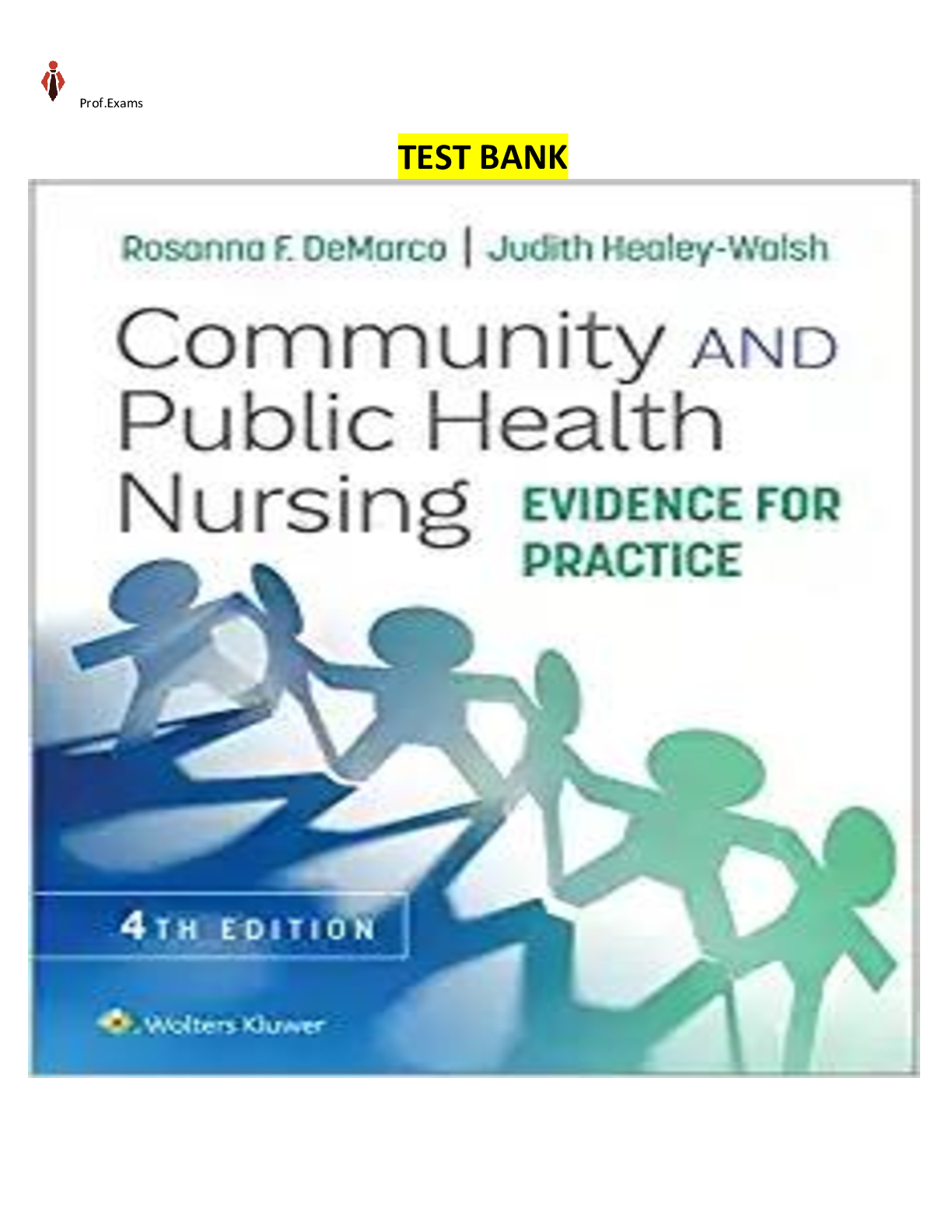
Buy this document to get the full access instantly
Instant Download Access after purchase
Add to cartInstant download
We Accept:

Reviews( 0 )
$34.00
Document information
Connected school, study & course
About the document
Uploaded On
Apr 01, 2023
Number of pages
278
Written in
Additional information
This document has been written for:
Uploaded
Apr 01, 2023
Downloads
0
Views
61

